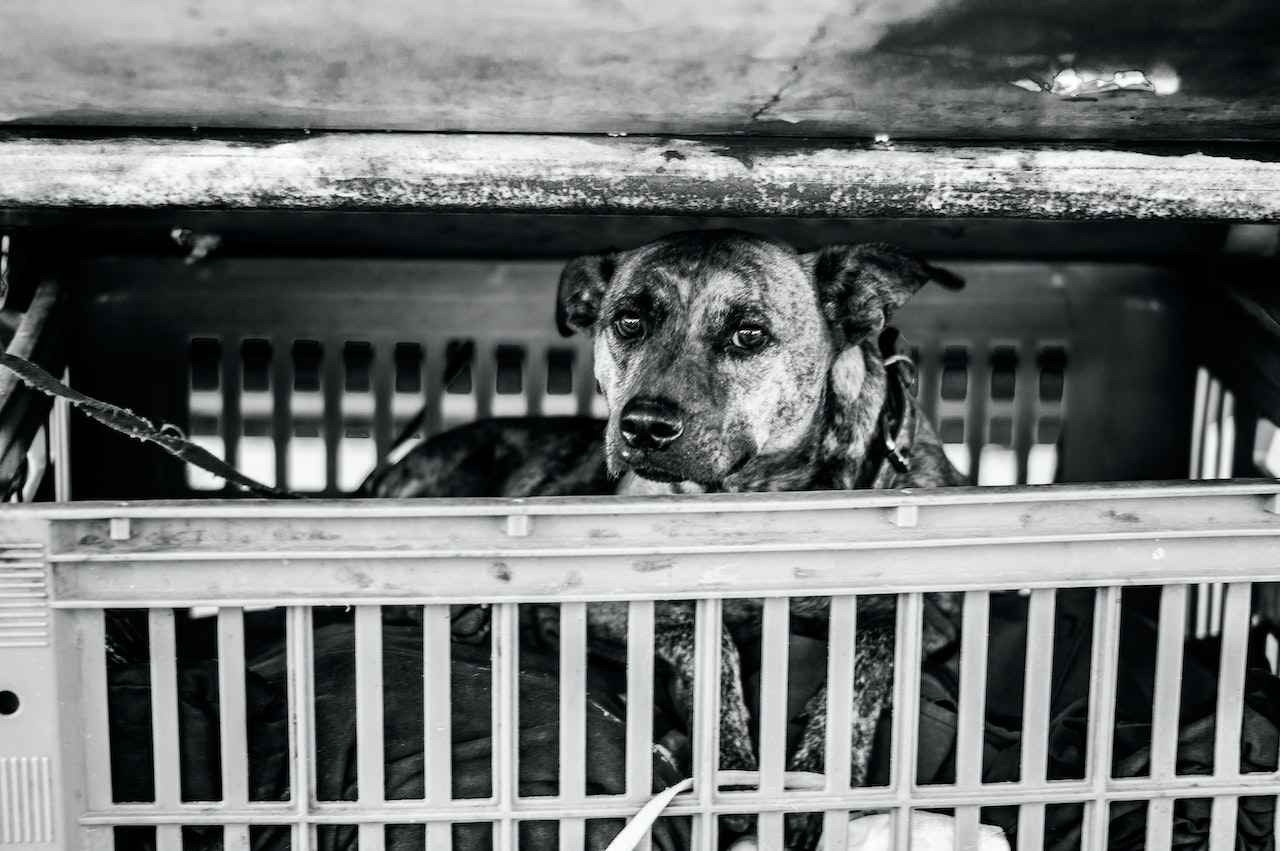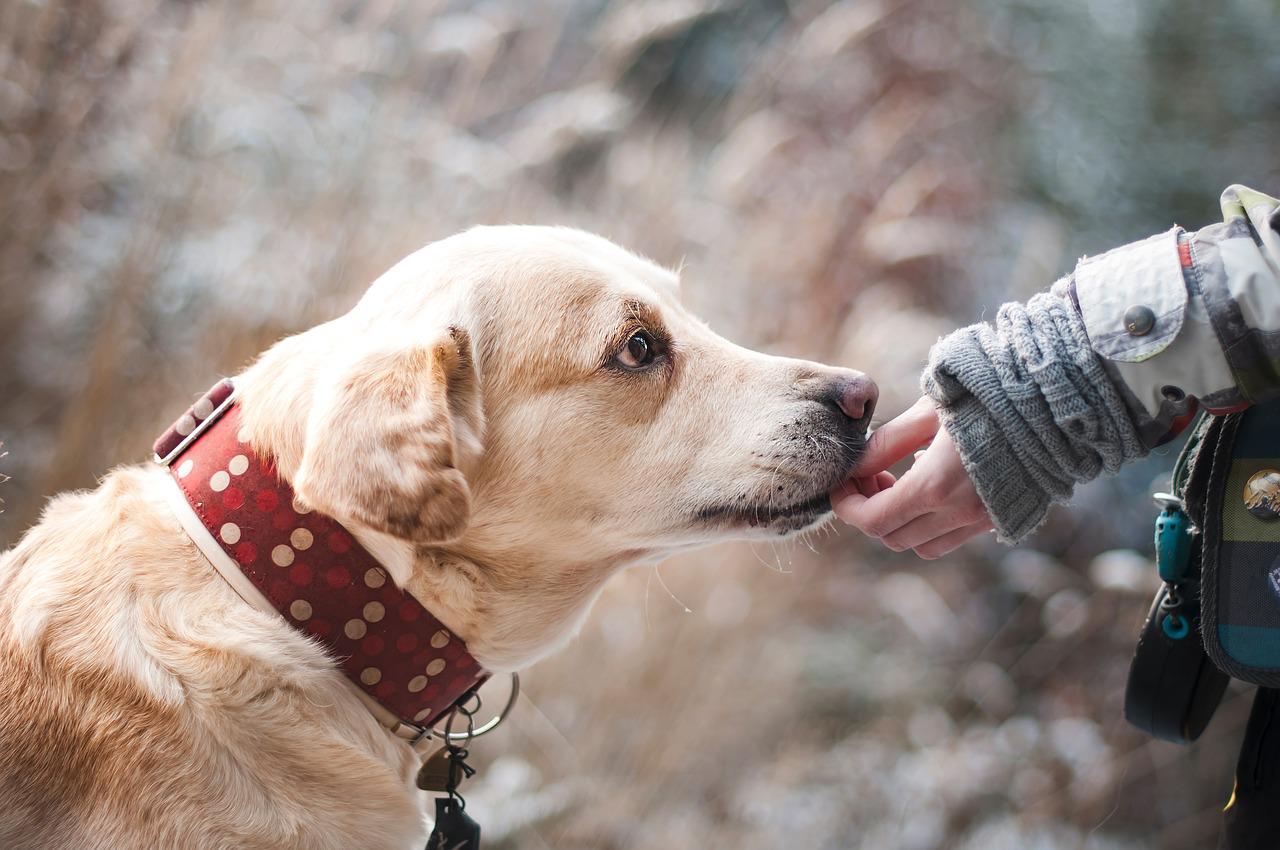
Congrats on the new furry friend! A puppy is such enjoyable. However, getting a puppy to be a good dog and not bark inside his crate can be a challenge. The key is persistence and patience.
Crates can be a fantastic aid to training your puppy. They can help housetrain your puppy and prevent the house from being destroyed by your puppy.
Everyone knows the dog who cries through the night. I’ve trained all my dogs, 16 in total. Some were more difficult than others.
I’ve called my dog, who is six months old Millie who is an Aussie mix, the “drama queen” when I first adopted her. She did not just whine, but during the first few days, she would let loose a bloody scream every now and then in her cage.
It took her several days to become at ease inside her cage. After many nights of the night of sleepless nights (for me) she is now a fan of her cage. It was not straightforward but it was definitely worth the nights of sleeplessness and frustration. Here are some helpful tips to help puppies be calm when they sleep in their crate at night.
What Should I Do If My Puppy Is Barking In His Crate?
Always ensure your Crate Is welcoming and Positive.
The puppy must look eagerly at the thought of being in the cage. An effective way to remind yourself of this is to use the phrase “the crate is great.” There are a variety of ways to accomplish this.
- Put a blanket on the floor or towels to create a comfortable home. The dog could even squish them to create your own mattress.
If you can, purchase one that smells like his littermates, or from his previous place of his. It can help him relax with a familiar scent.
- It is also possible to put an insulated water bottle that is warm in a towel and placed it inside the crate. You can also purchase a toy known as The Calmeroos puppy toy that mimics the sound of a heartbeat, and comes with a warming pack that helps your puppy feel secure and secure.
Where Should I Place My Crate?

Particularly in the first couple of weeks, you should place your puppy’s crate in a place where it is visible to you. Most likely, it is in your bedroom in the evening.
At the time of day, it’s possible to move the crate to the area where you spend the most time like the family room. If you’re not interested in moving it, or you find it difficult to do it then you can buy another crate, but it could be expensive.
Since I’ve had a variety of dogs through the years, I’ve had numerous crates.
In time, as your dog grows fond of his crate, it’s possible to not be visible when he’s in the crate.
It’s crucial to do this in order that you don’t make him dependent on you seeing him. He’ll have to adjust to your absence of you therefore he’s less likely to suffer from separation anxiety.
What Type of Dog Crate Should I Use With My Puppy?
There are a variety of kinds of dog crates. Even though each puppy is unique There are pros and disadvantages to various types of crates.
Wire Dog Crate
In general, I would recommend this kind of product. They’re fairly inexpensive and typically last for a long time. I’ve got a few of my crates from twelve years.
My new puppy Millie loves her wire cage at the moment and often goes in it by herself to lie down.
Purchase a wire crate that is divided and a door, so you can move it around as your puppy develops.
The majority of them have an aluminum tray on the bottom that can slide out and be cleaned. In the absence of any physical issues, the majority of pups do not wish to ruin their crate.
I’ve had great success using my experience with Midwest LifeStages crates. We purchased an Midwest LifeStages crate for Linus about 15 years ago and continue to use the exact crate even today. – Colby
However, sometimes puppies vomit from something they consumed or be suffering from diarrhea. Therefore, the plastic tray comes in useful.
One of the advantages of a wire cage is the puppy feels connected to the world around him and won’t be as alone if he is able to see you.
For dogs who feel more secure inside a cage, you can put blankets over it. Make sure your pet isn’t a trickster who could take the blanket or chew the blanket.
A golden retriever I rescued, Riley, was about six months old when he first came to me. He was not used to the crate, which is why I put blankets upon it so that he could feel more at ease.
While watching his behavior the first night I realized that this was not a good idea for him. He started pulling the blanket into his mouth and chewing tiny pieces off.
It was evident that he enjoyed being inside the wire crate with no cover in a couple of days, and he settled quickly to relax.
Plastic Kennel
Some dogs prefer the security and safety of the kennel made of plastic. I also have them and usually use them to keep my pets when I travel on the bus.
I make sure that they’re secured inside the van to ensure that they don’t get tossed around.
When I first bought the kennel in plastic I waited until the dogs were fully grown. If you own the kind of dog that you would call a lab puppy, you’ll have to spend a lot of money buying crates each time they grow.
When they’re larger, they’re typically costlier than their wire counterparts.
Cloth Foldable Crates
They usually come with a lightweight frame and a cloth cover and are foldable for ease of transport. I am a fan of them when I take my dog somewhere for a trip, like to a hotel room.
But I would not recommend these for young children, since they are prone to be destroyed and chewed within a short period of time. They may be convinced that they’re large chew toys.
Alongside being destroyed and ruined, your furry friend can get loose and cause trouble If he decides to chew to get out.
I have the Noz2Noz Soft Crate set up in my office, where Elsa loves to relax when I am working. However, I do not recommend leaving your dog unsupervised inside a soft cage because they might choose to chew the fabric. – Colby
How Do I Introduce the Crate To My Puppy?

At first, it’s just a matter of having to gently guide the puppy into the cage. Don’t let me fool you, but it typically takes the puppy a few days-sometimes weeks to be able to accept the cage.
Some dogs aren’t able to take to the crate when it’s correctly introduced.
- At the beginning of the day, your puppy is adjusting to you. If your pup is playing with toys, you can put an item inside the crate to entice him inside. Keep the door open to let him get inside and out.
It’s possible to show him that you’re throwing him a few chunks of his snack.
Rejoice calmly when you enter. Do not be surprised when he leaves.
- Check to see if he’s completed some exercise for example, like grabbing toys, prior to you placing him in the cage.
If he has learned certain commands, such as sit or sit, you can exercise your mind prior to going into.
The objective is to ensure the dog is exhausted before placing him in the cage.
When you are doing anything with your dog you’re trying to prepare him to be successful!
- It is also important to ensure that he’s pooped before entering the crate, to ensure there is no chance of an accident or shout to inform you that you need to take him to the bathroom.
- As previously mentioned ensure that the crate is a warm area with a comfortable towel or blanket. Also, a warm water bottle wrapped in a towel or a Calmeroos Puppy Toy can help.
- Be sure to not feed him for more than two hours prior to putting him to the crate for the night. I do not withhold water since it is important for him to be well-hydrated.
- A ticking clock on the outside of the crate may help puppies calm down. The soothing sounds of white noise, or a soothing sound like waves from the ocean can help puppies relax.
- Every pup is unique. You’ll need to determine what’s best with your new puppy.
A shih-tzu puppy that I named appropriately Cuddles seemed to be at peace when I played a machine with sounds of ocean waves.
There is an app for most smartphones today to play peaceful sound effects.
- It is essential to determine the best method for your dog to ensure that he doesn’t cry in the cage. It’s extremely distressing to hear the puppy whine. Also, in an apartment, condo or attached home, it can disturb neighbors.
- The night before and the following nights, you’ll need to draw him in with kibble or a small dog treat or toy that can be put in the cage. If he refuses to get in, you’ll have to gently bring him inside and shut the door.
- In the coming weeks and days together with the puppy you’ll be able to try to lure him into the cage. Be sure that he’s exhausted prior to entering in order to prepare him to be successful.
In the end, you can shut the door for a short period of time (seconds initially) before opening the door to the crate when he’s still. Gradually increase the time.
There is a step-by-step guide that explains the steps to gradually introduce the crate to a brand-new puppy. If you’re struggling in the crate-training process, this method may be more effective for your puppy.
PRO TIP: Give your puppy something that is safe to keep him entertained and make his crate a more enjoyable space. I suggest Extreme Kong. I store it in the freezer when there is mixed dog food is approximately half full. Then, I give it to my puppy to play inside his brand newly-built “den.” My golden retriever puppy Riley would even run to his crate every time I would put my Kong inside his cage! This made his training much simpler.
What Should I Do If the Puppy Cries in His Crate?

Don’t panic! It’s normal for the majority of puppies to cry during the first night they sleep in their cage. Some release a small cry, some have full-on barking, and all the rest in between.
Whatever number of dogs I’ve owned, that heartbreaking sound is hard to bear. Puppy dogs are tiny and helpless animals. Their pain is real.
Puppies cry in their crates for a variety of reasons like fear, loneliness, boredom, having to use the toilet, or even missing their littermates. They’re not just throwing an argument.
- If you’re unsure if the puppy is required to go to the toilet, be on the safe side and bring him to the toilet. Don’t go with him there. The guy is there just in order to “do his doody.”
Give him a couple of minutes. If he isn’t potty-trained take him out gently in his cage.
- You can let him go several times if he is crying. However, after three or four attempts to make him go potty, I let the puppy let them cry. If you’ve exhausted him when he’s in his cage, he shouldn’t yell for hours and hours.
- If your puppy has been whining over a long period, be sure that you’ve set up the cage in a way that will be effective as explained in the previous paragraphs.
- A puppy is able to “hold it” overnight for around one hour more than the age of his parents months. For example, a 2-month-old puppy could be held for three hours at night.
- It will be better. The majority of puppies are able to adjust to living in a crate.
- Other things that you could do in order to aid your dog to adjust to his new home, for example, plugging into a diffuser called Adaptil (a pet-appeasing scent) close to the cage.
It is akin to the scent of the mother dog and is expected to have a soothing impact on the puppy. It’s similar to a Glade plug-in for dogs to be calm. There’s no smell that we can smell, however.
- If none of the above fails There are a variety of brands of soothing sprays that can be sprayed onto your puppy’s bedding. I’d suggest asking your vet first to determine whether they’re happy with the spray, however, I’ve had good results with them.
A mature dog that I adopted suffered from major anxiety about separation. Spraying his bed by using one spray seemed to be helpful. Many have had success using the Spray ThunderEssence.
- While soothing sounds and music as well as white noise could help, there’s music specifically designed to help calm puppies. Through the Pet’s Ear, It’s a collection of music tested to soothe puppies. A few of my dog-training clients have had excellent results using this music near their dog’s cage in the evening.
- Be sure to praise the puppy when he’s peaceful and calm. Don’t go on with more than a few words of “good puppy” or he’ll be dependent on you constantly speaking to him.
What Shouldn’t I Do If the Puppy Cries in His Crate?

There are a few techniques that were employed in the past to keep a puppy inside his cage. I wouldn’t recommend these methods. They aren’t the only ones that don’t work, but they may also cause cruelty to a puppy suffering from distress.
- Banging On the Crate. Although some puppies will calm down, it could create a frightening location that pups will be avoiding.
- Using the Crate as Punishment. Although our natural instinct might be to punish a puppy for chewing our couch by placing him in his Crate, this isn’t recommended.
The crate should be a place that is positive (“The Crate is Great”). It is possible to tackle the chewing behavior by giving your pup more exercise or directing him to an appropriate chew toy.
- Hollering at the Puppy to Be Quiet. Doing this could cause puppies to be scared of the dog. Some puppies could have a tendency to bark more when they believe that you’re barking!
- Spraying the Puppy With Water. This technique was employed a long time ago by a lot of pet owners. Some still use it. I wouldn’t recommend it since it can make the crate an unwelcome, insecure location.
- Shaking a Can Filled With Pennies. Some trainers still make use of “shake cans” or similar sound machines to stop the dog’s undesirable behavior. They employ a soda can that is filled with around 10 pennies. They tap the top of the can so that the pennies won’t fall out.
I wouldn’t suggest this because it could create a frightening area. Absolutely not soothing.
Although some pups may be quiet because of fear of sound the next time they’ll most likely fight to enter the crate. In addition, I don’t want to cause a dog to be scared and make him feel stressed while trying to accomplish a desired behavior.
Final Thoughts
Remember “The Crate Is Great!”
We train all of our puppies. The most important thing to be aware of is that every puppy is unique.
Some puppies get used to the crate immediately without even a sound. Some might cry, bark, and whine for weeks, days, and even months.
Here are some suggestions that you could do in order to assist your puppy to stop barking in his cage in late at night.
The last thing to keep in mind is that when training your puppy, you must be perseverant, patient, and constant. It may take a while however, in our experience each puppy eventually learns and is awed by his cage.